Major Case Event Tests Skills of Senior Public Safety Students
“They’re being treated like they are new detectives instead of students in a class. The less times you can say make believe and pretend, the better.” -Detective Groves
May 10, 2021
On Thursday, April 22, early in the morning, a line of Public Safety students laced up the boots of their uniforms and cracked open a box of donuts as they waited just outside the doors of the Public Safety room, not allowed to know what was going on inside.
Inside the Public Safety room, the smell of coffee lingered while a meeting took place between police officers, detectives, FBI agents, and crime analysts from a number of varying departments.
“Alright everyone,” Detective Brent Groves said. “If you’re ready to get into character, we can bring the kids in.”
Detective Groves, who teaches Law Enforcement for the Public Safety 21st Century Program and also works for the Olathe Police Department , was in charge of the two-day Major Case Event taking place. This event was a large-scale, mock, murder investigation set up extensively across the school campus, modeled after the Kansas City Metropolitan Major Case Squad. Senior students of the Public Safety program participated. It tested collectively almost all of the skills they had learned throughout their years in the program. For assistance in conducting the investigation, a wide range of law enforcement workers participated along with the students. They had been given the details of the crime scene and were being briefed on the particular execution of it.
Over the course of two days, a “dead body” was found, a canine unit was brought out, a suspect was be apprehended, an interrogation took place, the fire squad was asked to help, and a long list of other events occurred until the investigation was complete and crime had been solved.
The Investigation Begins
The students were allowed into the meeting space and the investigation officially began. It was announced that a body had been found near the baseball fields. The students took out their notepads and pencils to take notes on the briefing as well as the surveillance footage that was about to be projected for them on a large screen.
The surveillance footage featured a car parked in the baseball field parking lot. Another car slowly approached it. During the footage, several people were seen getting out of both cars until eventually someone fell to the ground and another person took off running. The second car drove away.
The officer who played the footage for them asked the students questions on what they had seen, testing their attention to detail. They were told to put on their duty belts (belts that replicate those of actual law enforcement and consist of plastic firearms) and were split into teams. Each team was led by a different law enforcement member, and the students took a brief moment to introduce themselves and become acquainted. When the teams were ready, they dispersed to the baseball fields.
A Body is Found
In the parking lot of the baseball fields sat the car seen on the surveillance footage. Next to the car, a body. From the body leaked a trail of a realistic, red, blood-like substance, and the students were instructed to be careful where they stepped as they were in the presence of a crime scene. A laser camera was brought out to do an all-around scan of the crime scene while the students consulted with their teams on how to go about the next steps.
Several teams walked around the car with cameras, taking photos of the outside of the scene, and then eventually moved on to examining the inside of the vehicle, snapping photos and collecting evidence like rounds of ammunition and alcohol bottles.
A Canine Unit is Brought Out
Officer Kegin from the Olathe PD brought out the 3-year-old German Shepherd, Java, from the police vehicle. Java was visibly ready and eager to track down evidence.
“The dog checked the vehicle where the victim was,” Kegin said, “picked up a strong odor of where someone would have had an adrenaline dump from being in that situation, and began to track.”
While Kegin was there to pay sole attention to the actions of Java and the signs she may be showing him, it was the job of seniors Summer Sperke and Bobby Wimpey to ensure his protection.
“I have to have officers with me that secure my back with firearms,” Kegin said. “This is a violent crime, right, a shooting. We have a victim of a shooting, so we have to assume that the suspect is armed. They have to cover me the whole time.”
As Java led the team around the storage building and up through the soccer field, Sperke and Wimpey, armed with the firearm-substitutes from their duty belts, remained cognizant of their surroundings. Java led the team to a gun that had been ditched on the soccer field, and alerted them by laying down on top of it. The gun would later be collected by another team of students and kept for evidence. Eventually, she led them to a wooded area where they met their first suspect, Crystal.
Sperke and Wimpey secured Crystal in handcuffs and led her to the police vehicle so she could be taken into custody. They asked her a series of basic questions like, ‘what is your name,’ but the answers they received were limited. When Crystal was asked what her middle name was for example, she replied that she had forgotten.
The Suspect is Interrogated
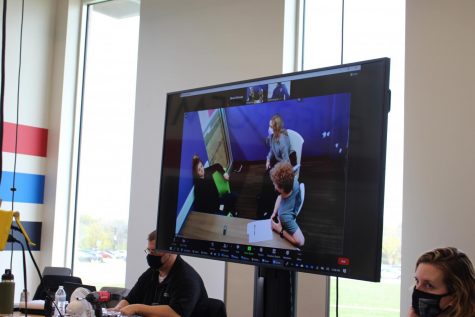
In this mock-investigation, the character of Crystal was played by former police officer Caroline Vancil. Vancil’s past experience of arresting suspects and taking them into custody herself helped her play the role of a suspect realistically.
“I was given a very brief description of like, here’s the scenario,” Vancil said. “But I had to build my own character. I just kind of used victims and suspects in the past to kind of build who I am.”
Claiming to forget her own middle name, for example, was not something she had to come up with out of thin air.
“People have in the past said, ‘Oh I don’t know’ or ‘I don’t know, you’re a cop, figure it out.’” Vancil said. “ It’s kind of like ‘I’ll give you my first name but you need to figure out the rest.’ It’s definitely happened in the past. So I was kind of like, ‘well you’re the cop, you figure it out. Do it yourself.’”
Now, Crystal sat in the Public Safety room awaiting her student-run investigation, but Caroline Vancil was plotting how it would go down. While she processed her thoughts, she decided what she would and would not tell the student investigators.
“I’m not going to tell them anything,” Vancil laughed. “ The process now, which happens in real life, when you’re in the interview a lead might come in, something that the officers on the street figure out that they need to ask me about. Once more information comes in, they’ll start asking me more detailed questions, because right now we just have a very blank canvas of ‘here’s what we know there was a dead guy.’”
The interrogation, run by Sperke and Wimpey, took place in a small conference room inside the Public Safety wing. Before the interrogation, all the teams came together for a meeting to catch each other up on their individual findings. The interrogation was also live-streamed from the interrogation room to the meeting space so that the others could be made equally aware of what had gone on.
Evidence on the Roof
Meanwhile, drones outside had picked up evidence on the roof of the storage facility near the baseball fields, and the fire team was called to help obtain it. The fire truck rolled in, and students dressed in full bunker gear began to climb out of it. They carried a ladder to the storage facility and propped it up on the roof. Many of them held onto the bottom legs of the ladder in order to secure it so that seniors Cade Smith and Ingrid Beltron could safely climb to the top of the 14-foot-tall building.
“Heights have always been a fear of mine,” Smith said. “So I did not enjoy going up that ladder at all. Since I am in the law enforcement pathway, we have not done many things with ladders, so that was a first for me, but it was needed to be done in order to find evidence for the case.”
The evidence found, a backpack containing three shirts, and a white powdered substance, would be a major clue in helping them find their main suspect, and ultimately solve the case.
A Conclusion is Drawn
Over the course of the two days, the investigation continued as the students uncovered more evidence, found new leads and ran more interrogations. Eventually, they were able to get Crystal to give them information about her boyfriend, who ended up being the perpetrator. This lead gave them probable cause to arrest him, but first they had to pull him over.
After running his plates, the students found he had been convicted of a violent felony, which deemed the felony car-stop high risk. Backup units were called as the students practiced pulling their weapons. The suspect, played by none other than Detective Groves himself, was arrested down the street at the fire training center.
Upon interrogation the students received a full confession from Groves regarding what essentially was found to be a drug deal, and a conclusion was drawn to what had been an extremely interactive and unique experience for the students of the Public Safety program. Those who wish to go on to careers in law enforcement after graduation, and even those who do not, were able to receive hands-on experience in their desired fields, and personal help from their local officers.
“They’re being treated like they are new detectives instead of students in a class,” Detective Groves said. “The less times you can say make believe and pretend, the better.”



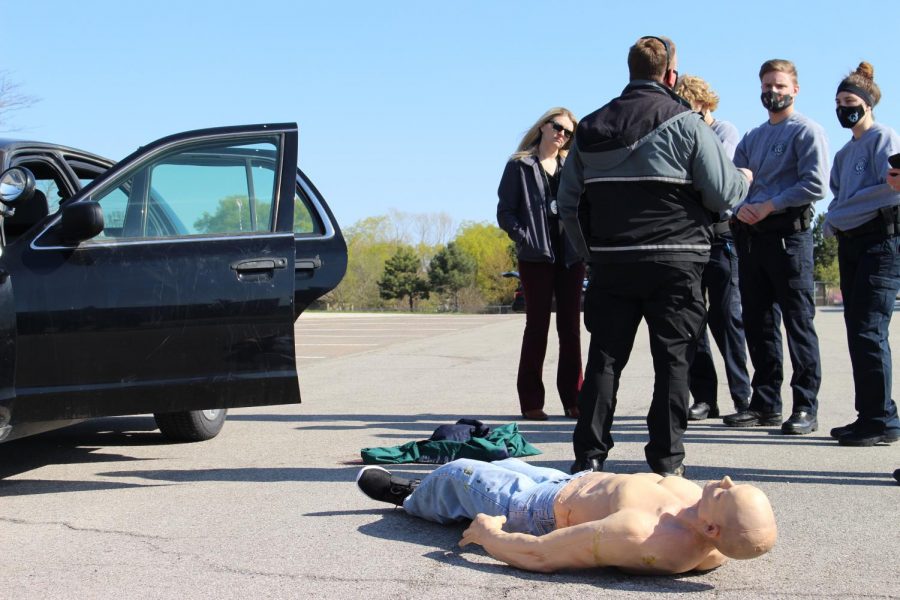
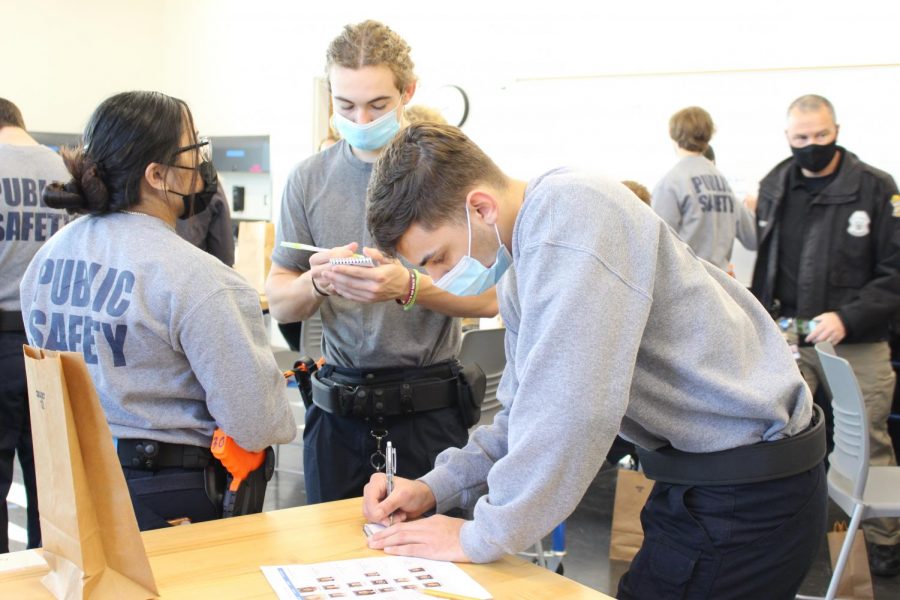
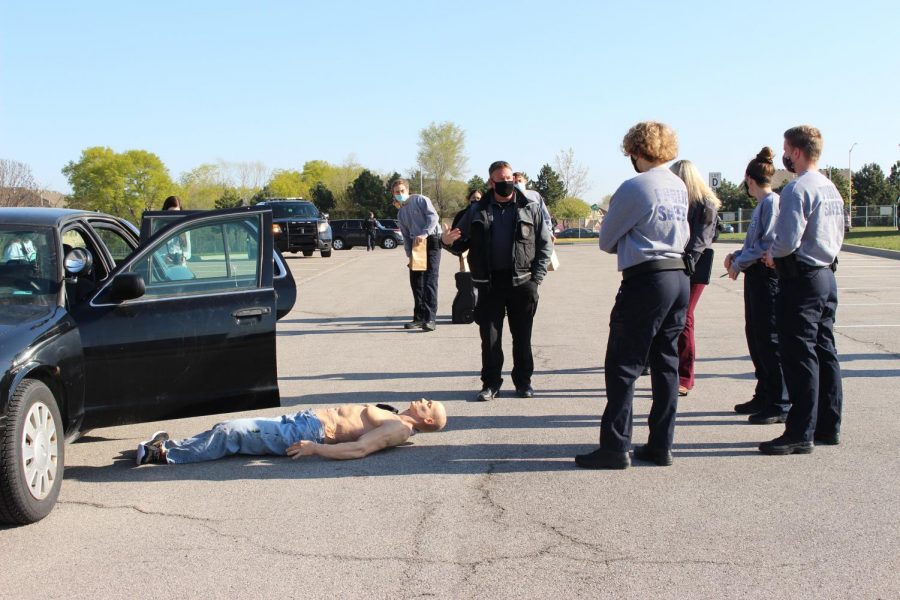
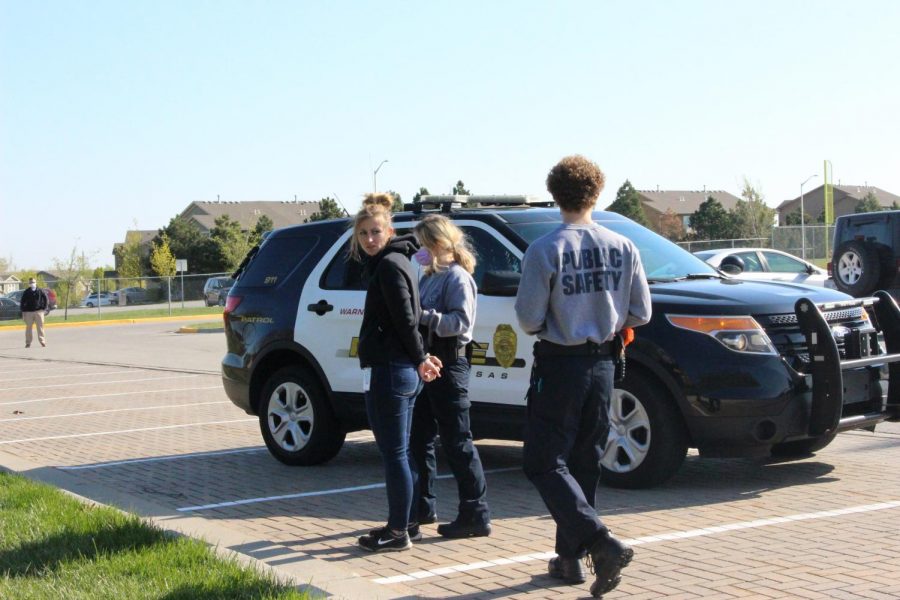
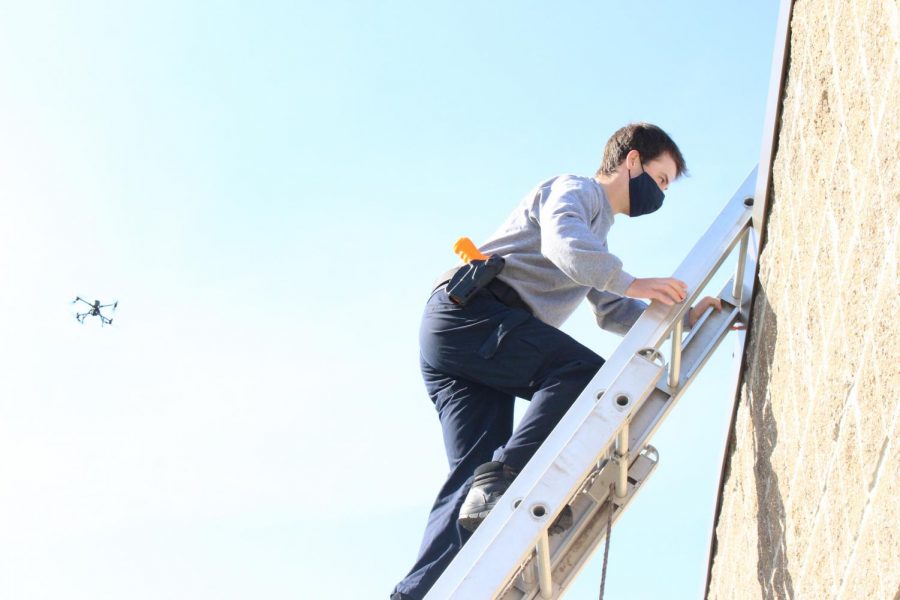
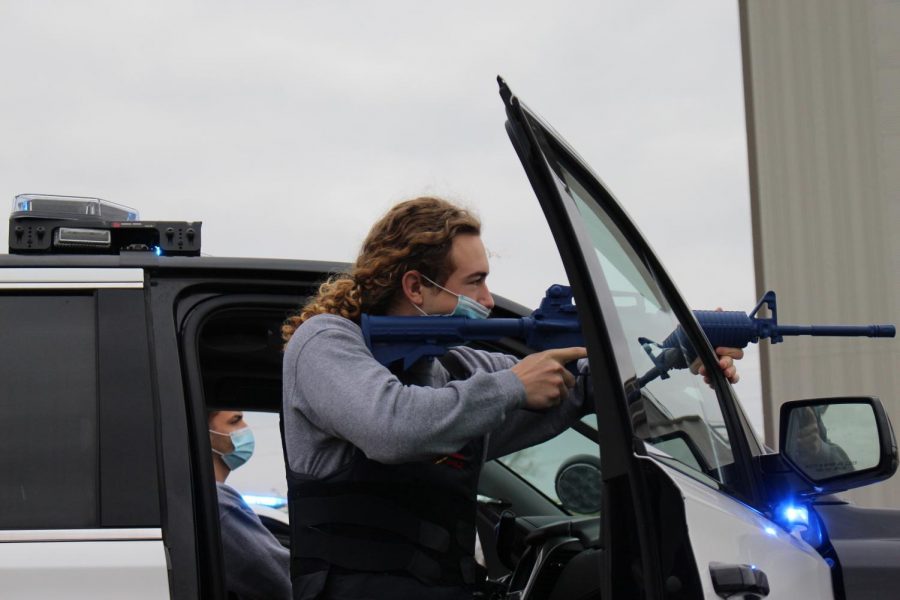


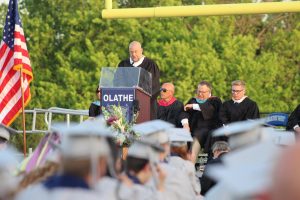
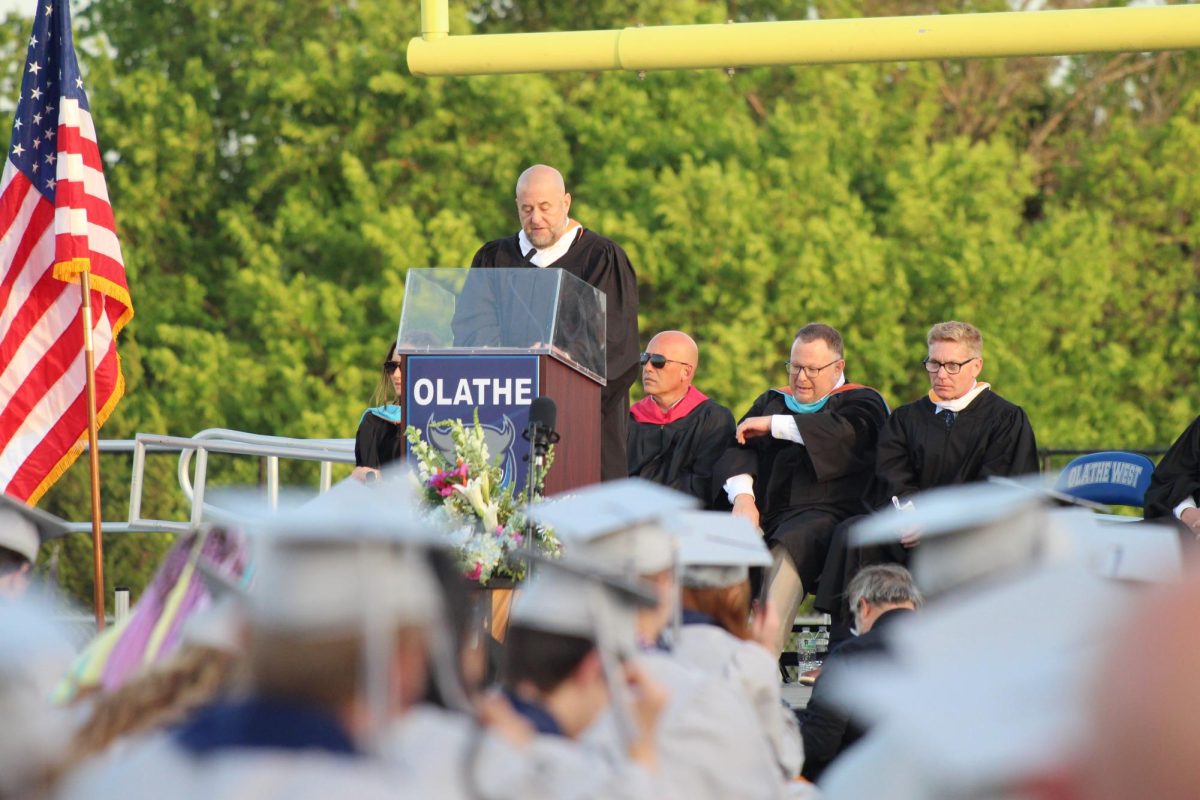
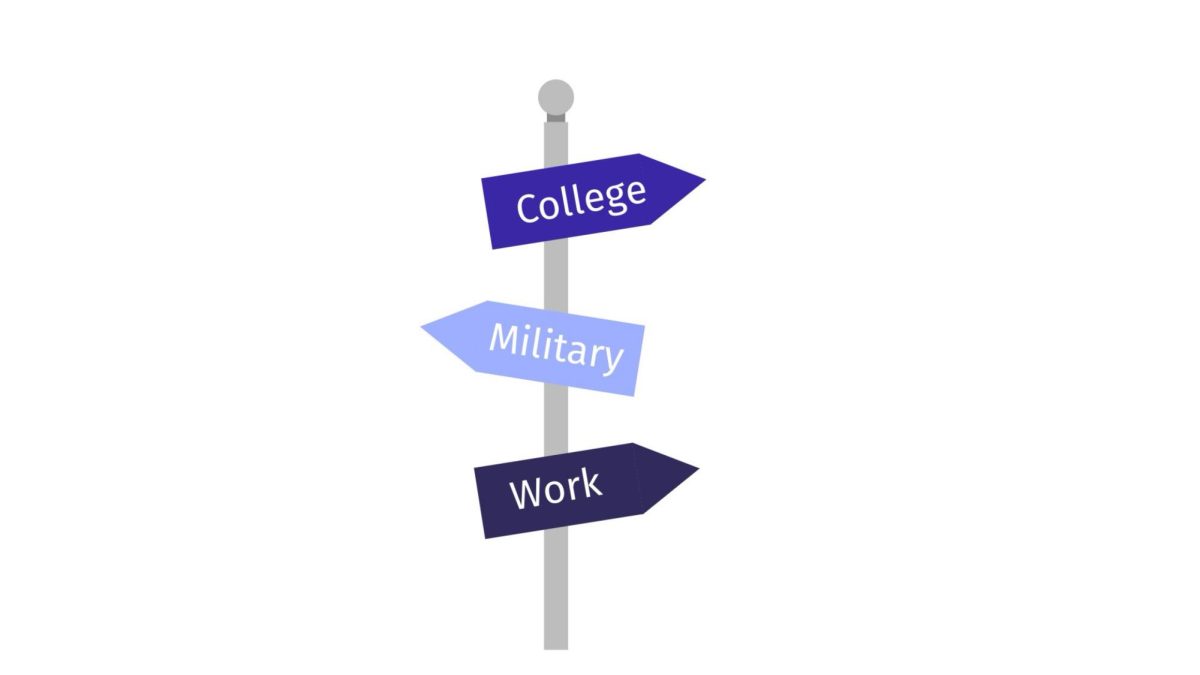
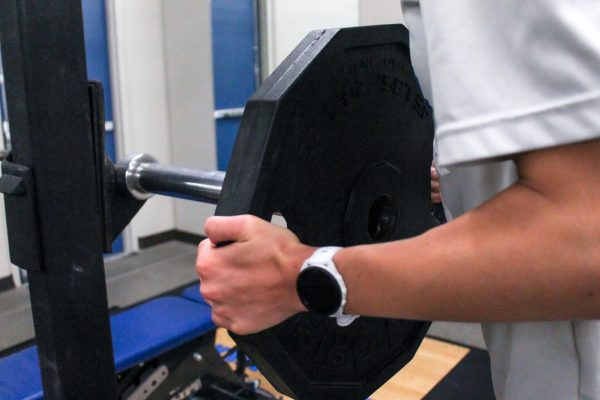
Dennis McCarthy • Sep 21, 2021 at 2:01 pm
I am a Law Enforcement teacher at Sussex County Vocational High School NJ High school I would like to obtain a copy of your crime scene scenario. It sounds like exactly what we need to do to prepare our students for the NOCTI EXAM. I have been running the program for a few years and would like some new ideas.
THANK YOU FOR YOUR ASSISTANCE
adviser • Sep 21, 2021 at 3:03 pm
Hello, we did not run the program. We are a newspaper staff and you are reading an article where we reported on the simulation. You would need to get in touch with Detective Brent Groves to get more information. [email protected]
Troy Fowlkes • Aug 24, 2021 at 3:27 pm
Hello,
I am a Law Enforcement teacher at Keansburg, NJ High school I would like to obtain a copy of your crime scene scenario. It sounds like exactly what we need to do to prepare our students for the NOCTI EXAM.
THANK YOU FOR YOUR ASSISTANCE